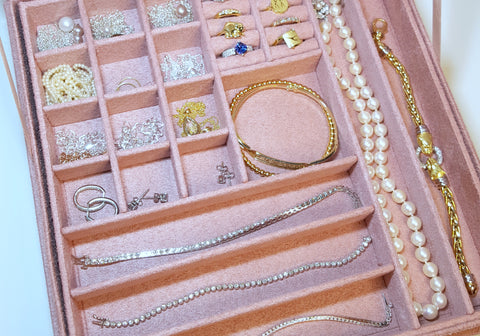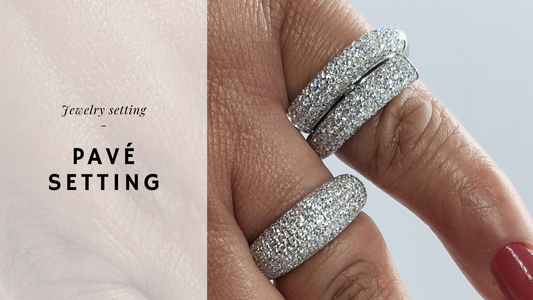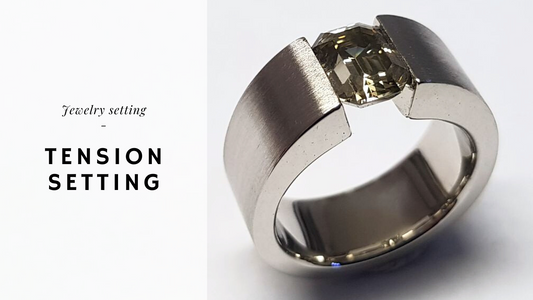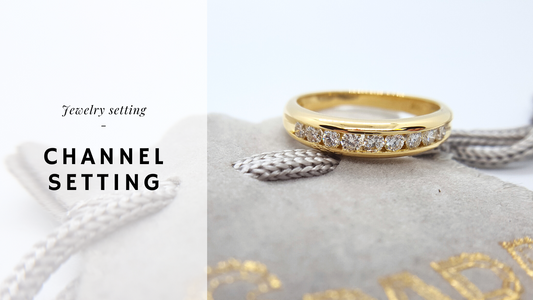
Gems are among the most durable of nature's creations but still require care if they are to retain their beauty. Caring for your jewelry is a matter of common sense and simple precaution.
Tip 1
Choose your method of cleaning based on the softest or most vulnerable component in your jewelry. If you have an emerald and diamond ring, for example, the emerald and not the diamond, should govern the cleaning method.
Tip 2
Check your jewelry for loose stones by gently shaking or tapping it next to your ear. Have any loose gems properly tightened by your jeweler prior to wearing.
Tip 3
Check clasps and fasteners often to make sure they are secure. If you are unsure, have your jeweler check your piece.

Tip 4
Restring all bead and pearl necklaces every two years or sooner if worn regularly. Bead and pearl necklaces should have knots between each gem.
Tip 5
Remove your jewelry before engaging in activities such as sports, housework, or gardening.
Tip 6
Put jewelry on after using lotions, cosmetics, hair spray or perfumes (never before).
Tip 7
Never remove your jewelry by pulling on the gems.
Tip 8
Carefully wipe jewelry with a soft, lint-free cloth after each wearing to remove oils and salts.

Tip 9
Store each piece of jewelry separately. Use compartments in jewelry boxes or store individually in pouches.
Tip 10
Store necklaces flat so that the harder stones do not scratch the softer ones, or so the gemstones do not scratch the metal. Almost every gem is harder than the metal in which it is set.
Tip 11
Clean your jewelry on occasion with a jewelry-cleaning solution or mechanical cleaner suitable for gems. When in doubt, use warm soapy water and a soft toothbrush.
Tip 12
Clean your gems over a bowl and not the sink, unless you enjoy plumbing!
Tip 13
Think twice before putting gems in an ultrasonic cleaner. Diamonds, rubies and sapphire are generally fine, but many other gems may not be. When in doubt, leave it out.
Tip 14
Porous, opaque gems such as lapis lazuli, turquoise and malachite require special care. These gems may absorb chemicals and soap, so they should just be gently wiped clean with a moist cloth.

Tip 15
Opals also require special care. Never use an ultrasonic cleaner or ammonia, and avoid heat or strong light that can dry out the water in opals.
Tip 16
Organic gems like pearl, coral and amber should only be wiped clean with a moist cloth. Due to their organic nature, these gems are both soft and porous. Avoid contact with hair sprays, cosmetics or perfume to prolong their beauty.
Tip 17
Some natural and certain color-enhanced gems may fade with prolonged exposure to sunlight. Do not leave these on a windowsill or a display case exposed to direct sunlight. This includes dyed agates and dyed pearls.
Tip 18
Do not use the same cloth to clean all your gems. The cloth that you use for your sapphire, rubies and diamonds for example ay contain particles that can scratch softer gems, such as apatite or tanzanite.
Tip 19
If you ant to make a piece of jewelry with your favorite gemstone, consider its durability. Softer gems are better suited to earrings and pendants, as are treated gems with certain special-care requirements.
Tip 20
Gemstones softer than a sever on the Moh's scale of hardness are more susceptible to scratching, since quartz dust is abundantly present in the air we breathe. Blow off any dust prior to cleaning with a soft, lint-free cloth.
Spada Diamonds offers jewelry cleaning and checkups. Contact us today to visit our showroom and let us check the safety of your jewelry.



